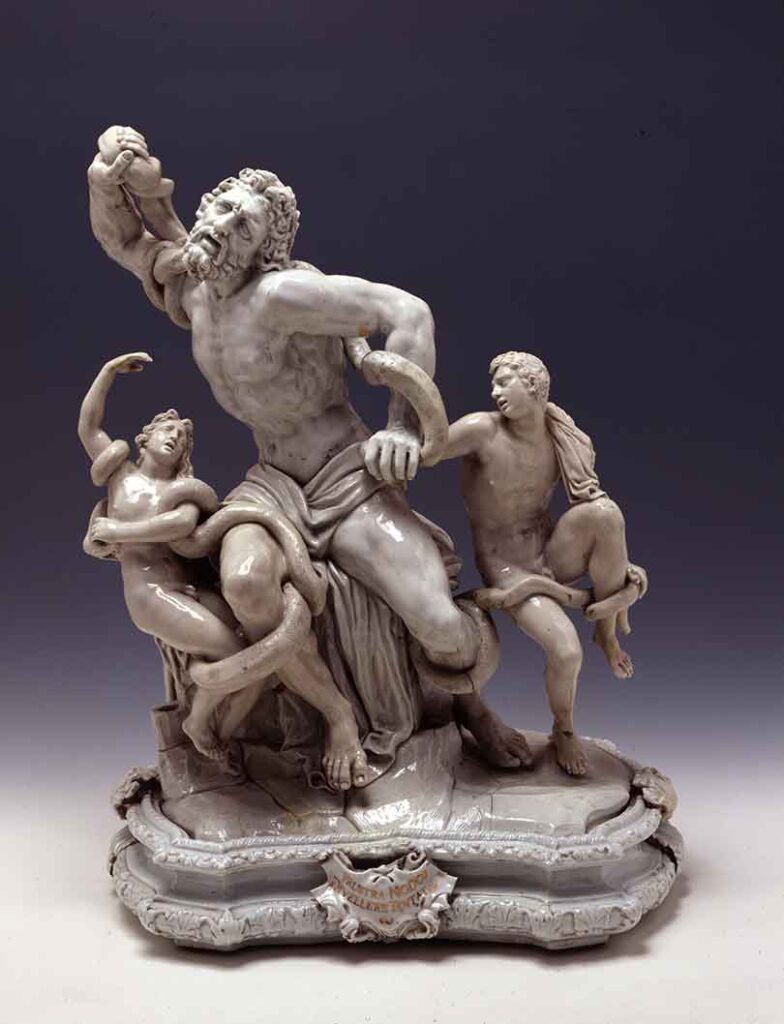Laocoon
Ginori manufactory , ca. 1749
Description

The group is an important example of the plastic production that characterized the activity of the Tuscan manufactory from its starting, in 1737. In addition to the creation of new and original models, Carlo Ginori had in fact the aim to create with the new material, hard porcelain, a gallery of copies of well-known statues from antiquity.
Here the subject is the Laocoon, the Hellenistic group found in Roma, near the Esquiline Hill in 1506, perhaps the most famous statue in the Vatican Museums.
Laocoon was a priest in the city of Troy who had warned the Trojans about accepting the wooden horse left as a gift by the Greeks. Athena punished him sending two sea-serpents to kill him and his sons. The serpents have already wrapped in their coils the young boys, while their father is trying in vain to free them. The Latin inscription on the base reads FRUSTRA NODOS DIVELLERE TENTAT (He tries in vain to loosen the knots) reminding of his tragic useless effort.
The Ginori group was made after a work by Baccio Bandinelli (1520-1525), now in the Gallerie degli Uffizi in Florence, inspired by the Vatican marble.
Data Sheet
Author
Ginori Manufactory
Date
ca. 1749
Material and technique
hard-paste porcelain
Measures
h. 55 cm
Acquisition
Elena Giulini donation, 1993
Inventory number
4641
location
Stucco Room
The Stucco room is the first historical room on the piano nobile, where the Museum’s porcelain and majolica collections have always been housed. Gian Giacomo Poldi Pezzoli personally acquired almost all of the pieces on display, about six hundred and fifty, displayed in a showcase built in 1880 to divide the Stucco room from the Golden room. The section of Meissen porcelain, undoubtedly the richest and most significant, covers the manufacture’s production from the 1720s to the second half of the nineteenth century, and includes table services, statuettes, and various objects. In Gian Giacomo’s time the Hall of the Stuccoes, called the Yellow Room, had stucco decorations in the Rococo style, which were destroyed in ’43 and partially reconstructed according to the original models.
collection
Ceramics
Within the Museum’s rich collection of ceramics are works of great quality executed by leading Italian – particularly Doccia and Capodimonte – and European manufactures. Among the latter, the most significant nucleus is the 18th-century Meissen porcelain, recently augmented by a generous donation from the Zerilli-Marimò collection.
